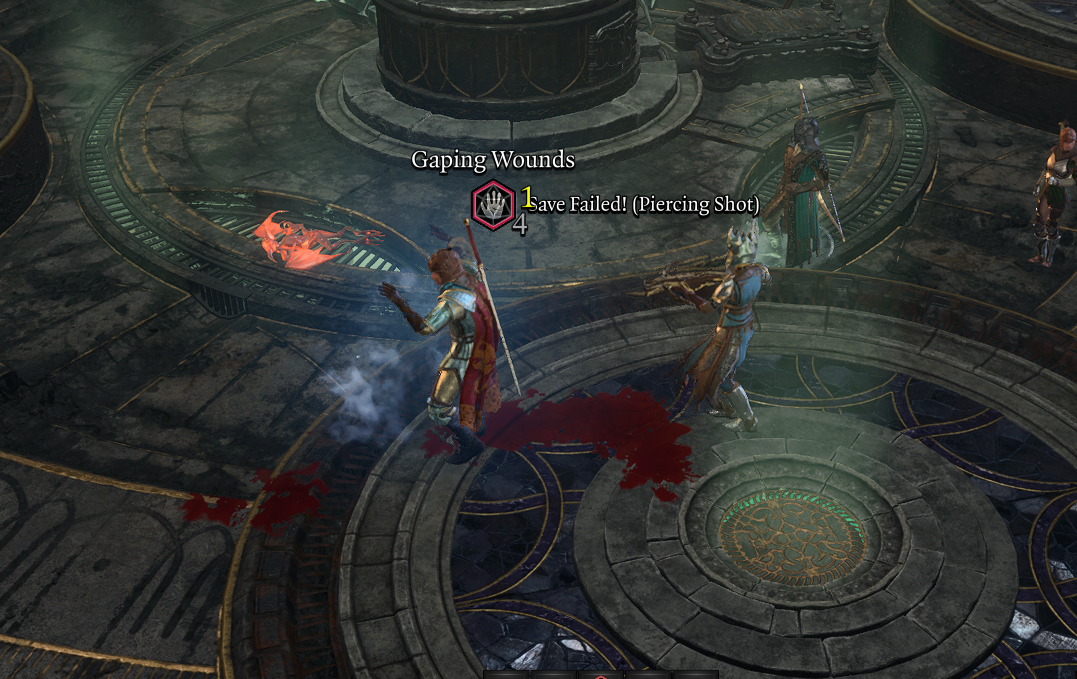
Saving Throw Explained - Baldur's Gate 3 (BG3)
Contents
What is Saving Throw and how it works?
Baldur's Gate 3, incorporates Saving Throws as a crucial aspect of its gameplay. This happens when a character is affected by various things in the game - spells, traps, environmental effects, etc. When this happens character is subjected to a Saving Throw and rolls a twenty-sided die (d20) plus any relevant modifiers.
The goal is to meet or exceed a specified target number, known as the "Difficulty Class" (DC). If the roll is successful, the character either avoids the effect entirely or reduces its impact. DC depends on the attacker's abilities or is set by the game if it's a trap.

There are different types of Saving Throws, each associated with one of the six primary ability scores: Strength, Dexterity, Constitution, Intelligence, Wisdom, and Charisma. For instance, a character might make a Dexterity Saving Throw to dodge out of the way of a fireball or a Wisdom Saving Throw to resist being charmed by an enemy spellcaster.
Saving Throw Proficiency
Saving Throw Proficiency indicates a character's specialized training or inherent aptitude in resisting certain types of effects. When a character is proficient in a saving throw for a particular ability score, they get to add their +2 proficiency bonus to the saving throw roll, increasing their chances of success.
| Class | Proficiencies in Saving Throws |
|---|---|
| Barbarian | Strength and Constitution |
| Bard | Dexterity and Charisma |
| Cleric | Wisdom and Charisma |
| Druid | Wisdom and Intelligence |
| Fighter | Strength and Constitution |
| Monk | Strength and Dexterity |
| Paladin | Wisdom and Charisma |
| Ranger | Strength and Dexterity |
| Rogue | Dexterity and Intelligence |
| Sorcerer | Constitution and Charisma |
| Warlock | Wisdom and Charisma |
| Wizard | Intelligence and Charisma |
Different Modifiers
So how can you affect Saving Throws and minimize any negative effects? There are a few aspects you should keep in mind. First, your Ability Score:

This includes our proficiency, ability score and bonus effects.
| Ability Score | Modifier |
|---|---|
| 1 | -5 |
| 2-3 | -4 |
| 4-5 | -3 |
| 6-7 | -2 |
| 8-9 | -1 |
| 10-11 | 0 |
| 12-13 | +1 |
| 14-15 | +2 |
| 16-17 | +3 |
| 18-19 | +4 |
| 20-23 | +5 |
| 22-23 | +6 |
| 24-25 | +7 |
| 26-27 | +8 |
| 28-29 | +9 |
| 30 | +10 |
Second, having proficiency, which we have covered above.
Third, they are also affected by Advantages and Disadvantages. This is important as you can greatly reduce or increase your chance. For example, being close to a mage who casts Hold on you will give them Disadvantage greatly reducing the chance that it succeeds.
Moreover, races like Half-Elves gain Advantage against Charm.
You can see all of the Saving Throw bonuses the character have in their inventory, and Detailed View tab:

Spellcasters and spell effectiveness
On the other side, if you are a spellcaster, you will want the enemy to have the lowest chance to resist with Saving Throw. For this to happen, you need high DC (Difficulty Class). it depends on the primary ability modifier:
| Class | DC ability modifier |
|---|---|
| Cleric | Wisdom |
| Druid | Wisdom |
| Sorcerer | Charisma |
| Warlock | Charisma |
| Wizard | Intelligence |
Conclusion
This should explain how Saving Throw works in Baldur's Gate 3. The mechanic decides most of the status effects on the game and whether they succeed on the targeted person or object. With this knowledge, you can embark on Forgotten Realms feeling safer and knowing have to minimize the negative impact statuses have.
Like, Dislike, comment, or share!

Discussion